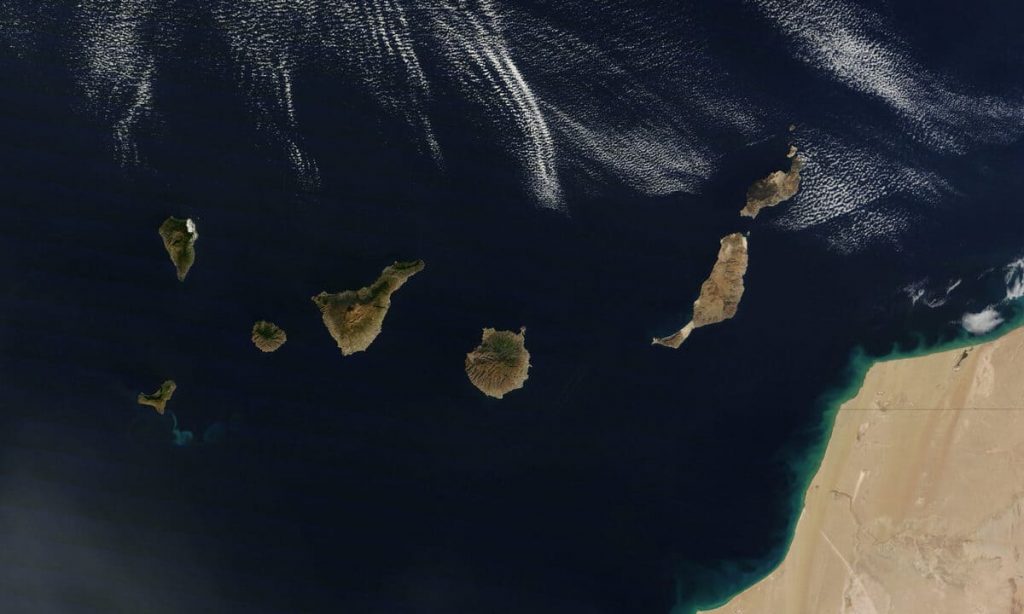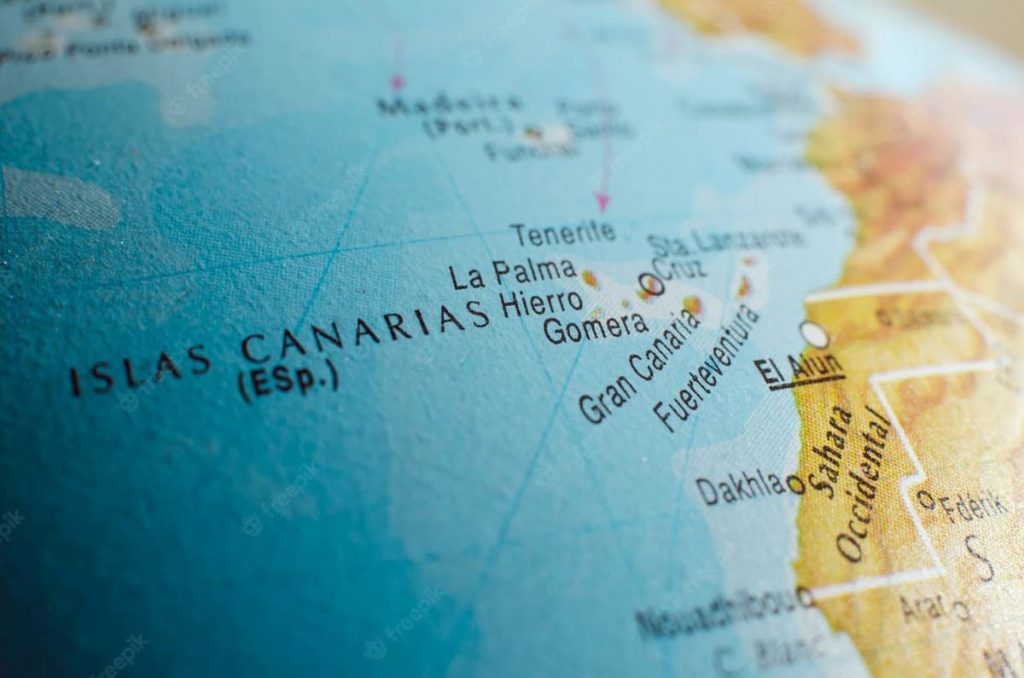There are many theories, as well as legends, that try to explain where the name of the Canary Islands comes from. Although nothing is completely proven, today at Marca Canaria we will talk about the different theories that revolve around the name of the Canary Islands.
The 8 Canary Islands: context and history
The Canary Islands is an archipelago of volcanic origin located in the Atlantic Ocean that forms a Spanish autonomous community in the northwest of Africa, with the status of historical nationality. It is also one of the outermost regions of the European Union.
The Canary Islands comprise eight islands, five islets, eight rocks and the sea. Politically, the archipelago consists of seven islands with their own administration and an eighth island, La Graciosa, recognized as such since 2018. The seven islands with their own administration are, on the one hand, El Hierro, La Gomera, La Palma and Tenerife, which constitute the province of Santa Cruz de Tenerife; and, on the other hand, Fuerteventura, Gran Canaria and Lanzarote, which constitute the province of Las Palmas.

To these seven islands are added, on the one hand, the uninhabited islets of Montaña Clara, Alegranza, Roque del Este and Roque del Oeste which, together with the island of La Graciosa, form the Chinijo archipelago and, on the other hand, the islet of Lobos, all belonging to the province of Las Palmas. In addition to the eight islands and five islets, there are a series of adjacent rocks: those of Salmor, Fasnia, Bonanza, Garachico and Anaga located in the province of Santa Cruz de Tenerife and those of Gando and Farallón de Sardina located in Gran Canaria.
Finally, this autonomous community is completed with the Canary waters, which are a special maritime area of the autonomous community and are integrated within the perimeter contour that arises from the union of the most salient extreme points of the islands and islets, being the only autonomous community in Spain that includes the sea as part of its surface.
First mentions of the Canary Islands in written documents
The first written document with a direct reference to the Canary Islands is due to Pliny the Elder, who cites the voyage of King Juba II of Mauritania to the islands in 40 B.C. and refers to them for the first time as the Fortunate Islands. In this document also appears for the first time the term Canary Islands, used to refer to the island of Gran Canaria.
According to Pliny, this name was given to the island in memory of two large dogs that Juba's envoys captured there and subsequently took to Mauritania (ancient northwestern region of the Maghreb).
Traditionally it has been considered the possibility that the dogs were mastiffs, which are currently represented on both sides of the current coat of arms of the Canary Islands. However, historian José Juan Jiménez, from the Museum of Nature and Man of Tenerife, maintains that Pliny the Elder did not refer to dogs but to a species of large monk seal that populated the coasts of the Archipelago until the 15th century and that has the name cannis marinus. And the fact is that Gran Canaria at that time was still uninhabited and, therefore, did not have dogs either, which were brought to the island by the original settlers, the Amazhigh or Berbers, who arrived on the island in the 1st century AD.

The Canarii, the possible reason for the name of the islands
Since ancient times the toponym was used in the plural to refer to the whole archipelago. Thus, in the 4th century Arnobio de Sicca wrote about the Canary Islands insulas.
Some modern theories relate the term Canary Islands to the North African ethnonym canarii, a Berber group that was located in northwestern Africa. In fact, Pliny himself mentions the canarii in another text, although he again relates this term to the canes. Also the mentioned José Juan Jiménez defends that the origin of the canarii of Gran Canaria is in that tribe of the Atlas that, after rebelling against the Romans, was deported to the island of Gran Canaria in the I century A.D. Therefore, and according to the mentioned historian, although the islands were called "Canary Islands" due to the presence of the monk seal cannis marinus in the archipelago, after the sending of the canarii to Gran Canaria the name of the island would be related, progressively, with the name of that tribe.
Some of the most popular theories
No, the name of the Canary Islands does not come from the bird
If you ask a child from outside the Canary Islands where the name of the Canary Islands comes from, he or she will probably answer that it comes from the bird: the canary. In reality, Canary Islands could mean land of dogs and this is undoubtedly one of the most relevant theories.
Different studies say that the monarch Juba II of Mauritania sent his troops to colonize the Canary Islands. Supposedly, when they landed, they found thousands of dogs. This attracted the attention of the troops so much that they baptized the islands as "Insulare Canaria" (dog islands), which would end up deriving in the current name of Canary Islands.
What if it came from monk seals?
There is a possibility that when the expeditionaries sent by Juba II arrived in the Canary Islands, they did not find dogs, but monk seals, also known as sea dogs. This finding would make them baptize the islands as "Canaria", very similar to the current name of the Canary Islands. If this theory is true, it would dismantle the previous one, which traditionally links the origin of the fortunate islands with dogs.
Perhaps the name Canary Islands does not come from animals.
To explain where the name of the Canary Islands comes from, several historians say that there was a Berber tribe called canarii. These ancient settlers were mainly found on the island of Gran Canaria and could be responsible for the current name of the Archipelago.
So, where does the name of the Canary Islands come from?
Although any of the three theories could be perfectly correct, the reality is that there is still no reliable evidence of the origin of the current name of our islands. Whatever the origin of the name of the Canary Islands, there is no doubt that our archipelago is a paradise.
The Canary Islands is a land with a thousand things to see, explore and learn about. If you are interested in knowing more interesting facts about Doramas, the aborigine of Gran Canaria, and the Canary Islands, its culture and traditions, we leave you below the link to the section Culture and traditions.
Photos: The Vegan Travelers, RTVC



